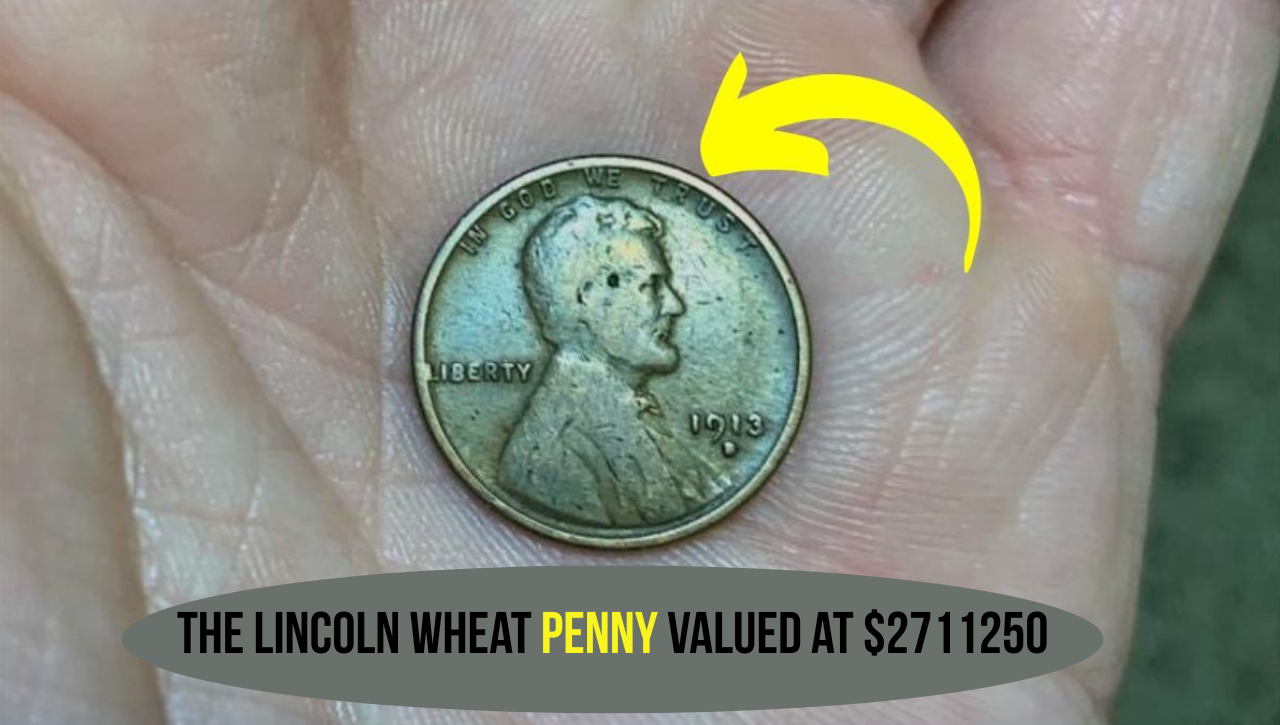It’s incredible to think that a tiny copper penny, worth just one cent, could fetch millions. But that’s the shocking fact with some limited-issue Lincoln Wheat Pennies — particularly one that’s worth an astonishing $2,711,250. Even more shocking? A few specimens of this coin may still circulate, slipping under the radar in pocket change or old jars of coins.
What Is the Lincoln Wheat Penny?
The Lincoln Wheat Penny, otherwise referred to as the “Wheat Cent,” was initially minted in 1909 to commemorate President Abraham Lincoln’s 100th birthday. It continued to be in production through 1958. On the back of the coin, two stalks of wheat flank the letters “ONE CENT,” earning it the popular nickname. The coins are prized among collectors for their timeless look and rich history.
The Rarity Behind the $2.7 Million Penny

The particular Lincoln Wheat penny worth more than \$2.7 million is thought to be an ultra-rare 1943 bronze cent. The U.S. Mint replaced copper with steel in making pennies during World War II in order to save copper for wartime use. Nevertheless, some 1943 pennies were made in error with the remaining copper planchets of 1942. Such rare mistakes are referred to as 1943 bronze Lincoln Wheat pennies.
Fewer than 20 genuine specimens are known to exist, and they have become among the most prized coins in American numismatics. Their scarcity, historical significance, and dramatic quality of the minting error make them extremely valuable.
Why It Could Still Be in Circulation

The interesting thing? These scarce pennies were minted during regular mint operations and were not taken out of circulation right away. That means some of them found their way into ordinary use and may have wound up in piggy banks, old collections, or coin jars nationwide.
Though the chances of spotting one are minuscule, they’re not nil. Some of the earlier found 1943 bronze pennies were found by ordinary folks who did not even realize they had a fortune in their possession. This provides optimism to collectors and treasure hunters as well that the next one could be out there waiting to be found.
How to Identify One
If you’re wondering about examining your change, here’s what to do:
- Date: 1943
- Color: Should be copper or bronze, not steel or silver
- Magnet Test: Steel pennies are magnetic. A real 1943 bronze penny will not stick to a magnet.
- Weight: A bronze penny is approximately 3.11 grams, whereas a steel one is approximately 2.7 grams.
If you think you have discovered a potential match, get the coin certified by a respectable coin grading firm such as PCGS or NGC.
Final Thoughts
The tale of the $2.7 million Lincoln Wheat penny is a reminder that treasures can still be uncovered in the unlikeliest of places—yes, even your spare change. Whether you’re an experienced collector or merely a person with a coin jar on the shelf, it may be worth a second glance. That plain-looking penny may be worth a life-altering amount of money.
FAQs
Q.Why is the 1943 Lincoln Wheat Penny worth $2.7 million?
A: It’s an ultra-rare minting error—struck in bronze instead of steel during wartime copper conservation.
Q.How can I tell if I have the rare 1943 bronze penny?
A: Check if it’s dated 1943, looks copper-colored, doesn’t stick to a magnet, and weighs about 3.11 grams.
Q: Are any of these rare pennies still in circulation?
A: Yes, a few may still exist in old coin jars or collections, making it possible to find one unexpectedly.










